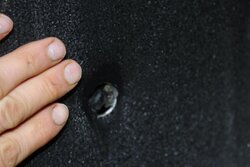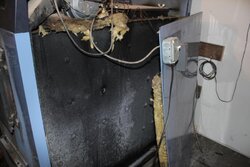One of the "soft plugs" as I refer them to on the side of the boiler tore through the outer side of the jacket. Tarm calls them something like expansion plugs. The boiler overheated after the circulating pump failed do to excess solder in the system. Tarm said it is carbon steel. What might some of you suggest for welding techniques(rod type, MIG, braze). Round or square patch. Tests will have to be above 30 psi to ensure safety. +37 in Galena today.





